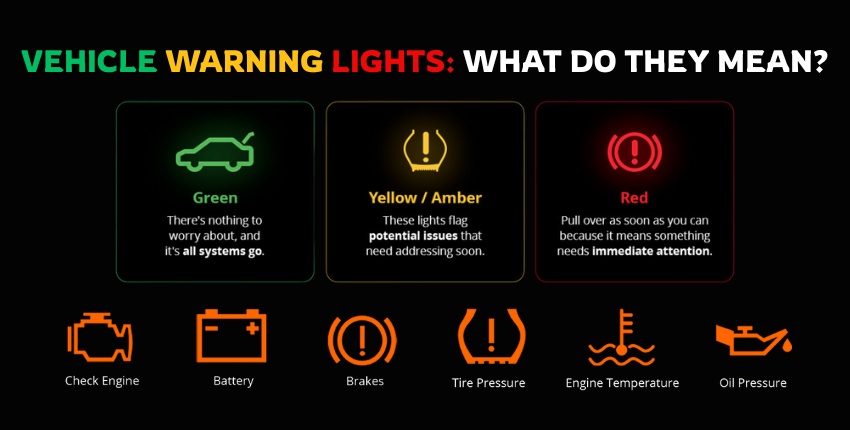You’re driving along, sipping your morning coffee, when a little light on your dashboard blinks on.
Is it serious? Do you need to pull over right now? Or is it one of those mystery symbols that’ll go away on its own?
At Bockman’s, we don’t believe in scaring people into service. We believe drivers should feel confident behind the wheel, not confused by blinking lights. Here’s a real-world guide to some of the most common dashboard warnings we see and what they usually mean.
Quick Tip: Dashboard Light Colors
- Red = Stop. Pull over safely and shut off the engine.
- Yellow/Orange = Caution. Don’t panic, but don’t ignore it either.
- Green/Blue = Informational. Just a heads up that something’s active (headlights, cruise control, etc.).
The Most Common Warning Lights And Real-Life Examples
- Check Engine Light (CEL)
- What it looks like: A small engine icon (sometimes with “Check Engine”).
- What it means: It can be as simple as a loose gas cap or as serious as a bad catalytic converter.
- When to act: Flashing = pull over. Steady = schedule a check soon.
- Real example: One customer came in with a flashing CEL, which turned out to be a misfiring cylinder. We caught it before it damaged the catalytic converter, saving them over $1,000.
- Battery Warning Light
- What it looks like: A battery symbol with + and – signs.
- What it means: The system isn’t charging right, could be the alternator, battery, or wiring.
- When to act: Soon. The car may not restart next time.
- Real example: A customer’s light came on in the parking lot, and sure enough, the battery was toast. The alternator was also tested, and it was determined to be the actual cause of the issue.
- Oil Pressure Warning
- What it looks like: An oil can with a drip.
- What it means: Your engine might not be getting the oil it needs.
- When to act: Immediately. Shut off the car and call for help.
- Real example: A college student ignored this light for two days, ended up needing an engine replacement. A few bottles of oil would’ve prevented it.
- Brake System Warning
- What it looks like: A circle with an exclamation point or the word “BRAKE”.
- What it means: Could be low brake fluid, a problem with the ABS, or a stuck parking brake.
- When to act: ASAP. If it stays on while driving, get it checked.
- Real example: A mom came in after noticing the light on during school drop-off. The rear brakes were down to metal, caught it before it affected the rotors.
- Tire Pressure Monitoring System (TPMS)
- What it looks like: A horseshoe with an exclamation point.
- What it means: One or more tires are underinflated.
- When to act: Soon. Low pressure = bad mileage and tire wear.
- Real example: A driver came in thinking they had a slow leak. We found a screw in the sidewall, not repairable. Thankfully, they came in before it blew out on the highway.
- Temperature Warning Light
- What it looks like: A thermometer floating in water.
- What it means: Your engine is overheating.
- When to act: Immediately. Turn it off and call for a tow.
- Real example: A high schooler came in steaming (literally). Their radiator fan had failed. We replaced it and refilled the coolant, crisis avoided.
- ABS Warning Light
- What it looks like: “ABS” in a circle.
- What it means: Your anti-lock braking system isn’t functioning properly.
- When to act: Soon. Regular brakes work, but ABS won’t.
- Real example: A business owner came in for a fleet check. One van had an ABS code from a bad wheel speed sensor, something they wouldn’t have caught without the light.
- Airbag Warning Light
- What it looks like: A person with a circle in front of them (airbag).
- What it means: There’s a problem with the airbag system.
- When to act: Promptly. It might not deploy in a crash.
- Real example: We had a customer prepping their vehicle for a teen driver. The light turned out to be a faulty seat sensor, not a big fix, but a critical one.
- Traction Control Light
- What it looks like: A car with squiggly lines behind it.
- What it means: Either the system is engaged, or there’s a fault.
- When to act: If it stays on during normal driving, have it checked.
- Real example: A customer noticed it staying on every sunny day. A bad steering angle sensor was sending false signals, easy fix once we scanned it.
- Low Fuel Warning
- What it looks like: A gas pump icon.
- What it means: You’re running low on fuel, but this light isn’t just about avoiding inconvenience.
- When to act: Right away. Driving on fumes can overheat your fuel pump or cause it to pull in air and sediment from the bottom of the tank. That kind of damage adds up fast. A fill-up at the gas station beats an $800 repair any day.
- Real-life example: We had a customer who regularly ran the tank to empty. One cold morning, the car wouldn’t start. The fuel pump had burned out and had to be replaced. All of it could’ve been avoided with a quick stop at the gas station.
Final Thought: Don’t Guess, Get Peace of Mind Instead
Dashboard lights aren’t just annoying. They’re your car’s way of saying something needs attention. Catching the issue early can save you time, money, and stress.
If something’s glowing on your dash, let the crew at Bockman’s Auto, Truck & Tire take a look. No pressure. Just honest answers and the help you need.
Schedule your visit
Or give us a call, we’re happy to walk you through it.

